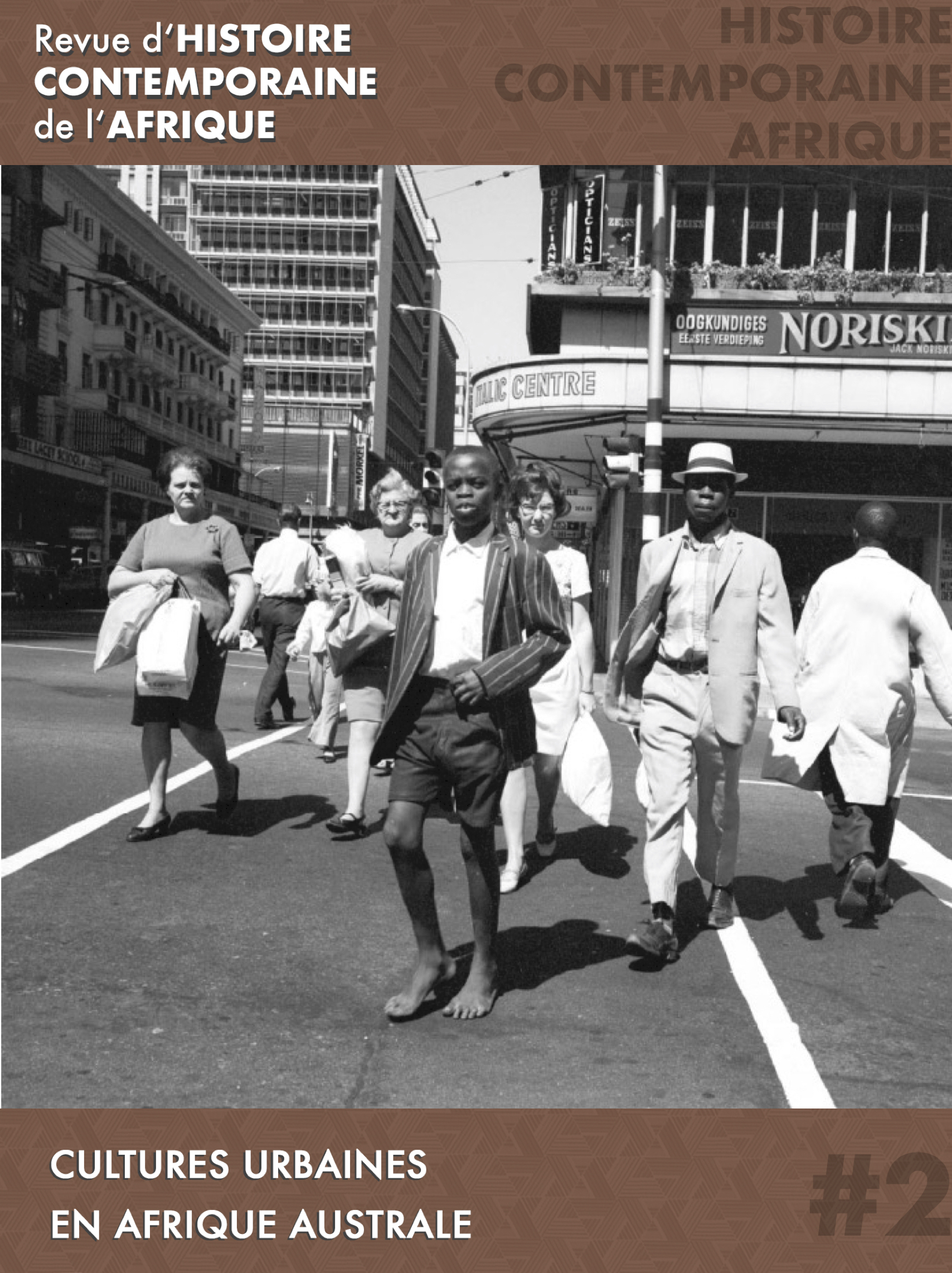The Pink Inner-City
Creating Queer Spaces in Hillbrow, Johannesburg, during apartheid
DOI:
https://doi.org/10.51185/journals/rhca.2021.e556Keywords:
Johannesburg, urban culture, queer culture, gay, lesbian, cruisingAbstract
Johannesburg, South Africa’s largest city and economic heartland, has a rich history of queer subculture. The paper focuses on Hillbrow in the 1970s and 1980s when it was regarded as the gay centre of Johannesburg and analyses how queer people formed their own urban culture in this inner-city suburb through the creation of gay and gay-friendly clubs and bars, secret house parties and public cruising. These processes are examined in the context of the Immorality Amendment Act of 1969 which criminalized gay men. The paper also analyses the racial dynamics between black and white queer people in Hillbrow, and how these complicated the production of queer spaces in the city. By making use of archives and interviews this research highlights the importance of Hillbrow as a safe space for queer people during apartheid.
French Translation: Gilles Baro, Sophie Dulucq and Camille Evrard.
References
BANHAM Hugo (2017), « Mapping the Black Queer Geography of Johannesburg’s Lesbian Women through Narrative », PINS (Psychology in Society), 55, en ligne. URL : http://www.scielo.org.za/scielo.php?script=sci_arttext&pid=S1015-60462017000300006 (consulté le 8 août 2021).
BATRA Kanika (2016), « Worlding Sexualities under Apartheid: From Gay Liberation to a Queer Afropolitanism », Postcolonial Studies, 19(1), pp. 37-52.
CAROLIN Andy (2017), « Apartheid’s Immorality Amendment Act and the fiction of heteronormative whiteness », Tydskrif vir Letturkunde, 54(1), en ligne. URL : http://www.scielo.org.za/scielo.php?script=sci_arttext&pid=S0041-476X2017000100007 (consulé le 6 août 2021).
COCK Jacklyn (2003), « Engendering Gay and Lesbian Rights: The Equality Clause in the South African Constitution », Women’s Studies International Forum, 26(1), pp. 35-45.
CONWAY Daniel (2009), « Queering Apartheid: The National Party’s 1987 “Gay Rights” Election Campaign in Hillbrow », Journal of Southern African Studies, 35(4), pp. 849-863.
DUBOW Saul (2014), Apartheid, 1948-1994, United Kingdom, Oxford University Press.
DU PISANI Kobus (2012), « Shifting Sexual Morality? Changing Views on Homosexuality in Afrikaner Society during the 1960s », Historia, 57(2), pp. 182-221.
GEVISSER Mark (1994), « A Different Fight for Freedom: A History of South African Lesbian and Gay Organisation from the 1950s to 1990s », in M. GEVISSER et E. CAMERON (dir.), Defiant Desire: Gay and Lesbian Lives in South Africa, Braamfontein, Ravan Press, pp. 14-88.
GEVISSER Mark (2014), Lost and Found in Johannesburg. A memoir, New York, Farrar, Straus and Giroux.
GEVISSER Mark et CAMERON Edwin (1994), « Defiant Desire », in M. GEVISSER et E. CAMERON (dir.), Defiant Desire: Gay and Lesbian Lives in South Africa, Braamfontein, Ravan Press, pp. 3-13.
HOAD Neville, KAREN Martin et GRAEME Reid (dir.) (2005), Sex and Politics in South Africa, Cape Town, Double Storey Books.
MARCUSE Peter (2016), « Whose Right(s) to what City? », in N. BRENNER, P. MARCUSE et M. MAYER (dir.), Cities for People, Not for Profit: Critical Urban Theory and the Right to the City, Oxon, Routledge, pp. 24-41.
MATHER C. (1987), « Residential Segregation and Johannesburg’s “Locations in the Sky” », South African Geographical Journal, 69(2), pp. 119-128.
MOONEY Katie (2006), « Die Eendstert Euwel » and societal responses to white youth sub-cultural identities on the Witwatersrand, 1930-1964, Thèse de doctorat en histoire, Université du Witwatersrand.
MORRELL Robert (1998), « Of Boys and Men: Masculinity and Gender in Southern African Studies », Journal of Southern African Studies, 24(4), pp. 605-630.
MORRIS Alan (1999), « Race Relations and Racism in a Racially Diverse Inner City Neighbourhood: A Case Study of Hillbrow, Johannesburg », Journal of Southern African Studies, 25(4), pp. 667-694.
MORRIS Alan (1999), Bleakness and Light: Inner-City Transition in Hillbrow, Johannesburg, South Africa, Witwatersrand University Press.
MURRAY Martin J. (2008), Taming the Disorderly City: The Spatial Landscape of Johannesburg after Apartheid, Ithaca and London, Cornell University Press.
NICOL Julia (1991), « Organisation of Lesbian and Gay Activists », Agenda: Empowering Women for Gender Equity, 7(11), pp. 45-46.
REDDY Vasu (1998), « Negotiating Gay Masculinities », Agenda: Empowering Women for Gender Equity, 37, pp. 65-70.
RETIEF Glen (1994), « Keeping Sodom out of the Laager: The Policing of Sexual Minorities in South Africa », in M. GEVISSER et E. CAMERON (dir.), Defiant Desire: Gay and Lesbian Lives in South Africa, Braamfontein, Ravan Press, pp. 99-114.
SHEAR Keith (2013), « At war with the pass laws? Reform and the Policing of White Supremacy in 1940s South Africa », The Historical Journal, 56(1), pp. 205-229.
TABET Paola (2012), « Through the looking glass: sexual-economic exchange », in F. GRANDE OMOKARO et F. REYSOO (dir.), Chic, chèque, choc : transactions autour des corps et stratégies amoureuses contemporaines, Genève, Graduate Institute Publications, pp. 39-51.
Downloads
Published
How to Cite
Issue
Section
License
Some rights reserved 2021 Jonathan Botes; Gilles Baro, Sophie Dulucq, Camille Evrard

This work is licensed under a Creative Commons Attribution-NonCommercial 4.0 International License.








